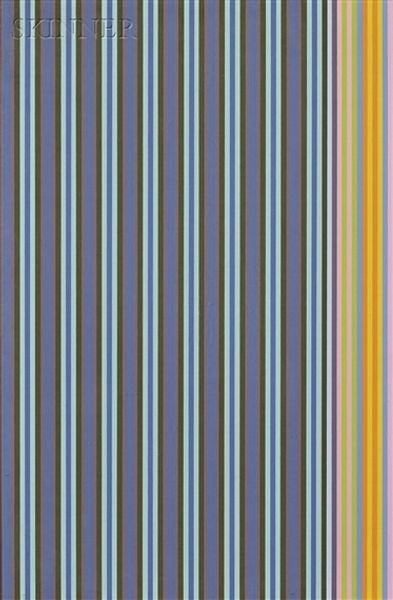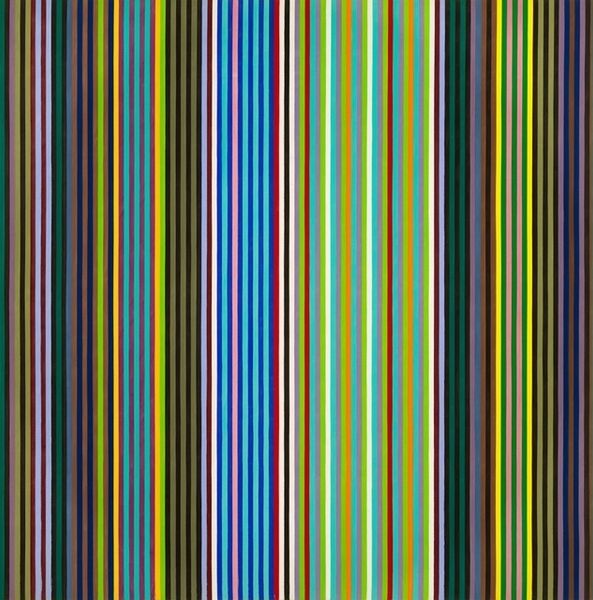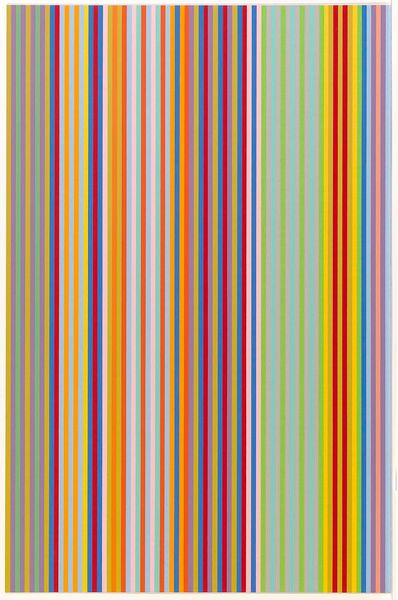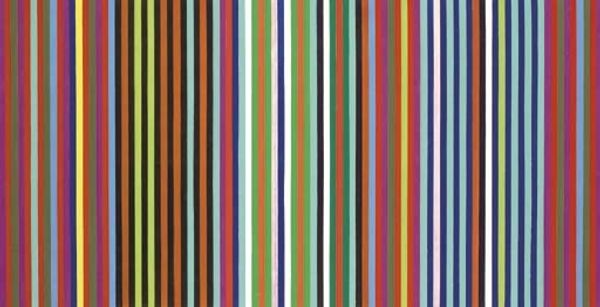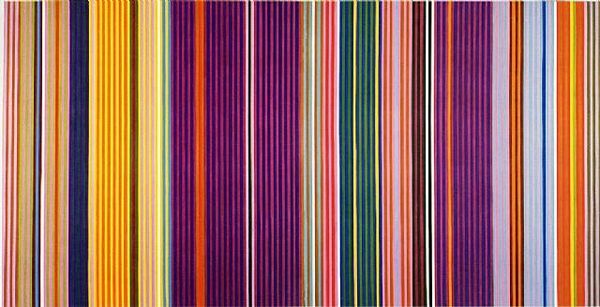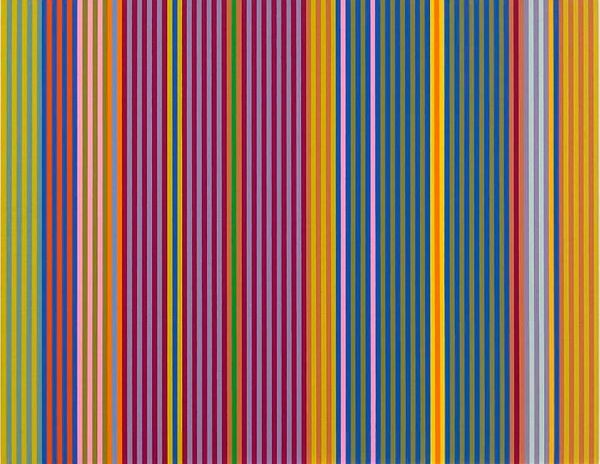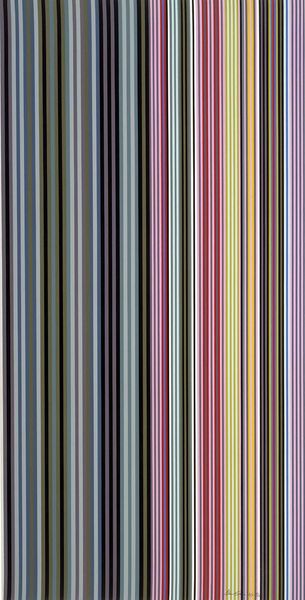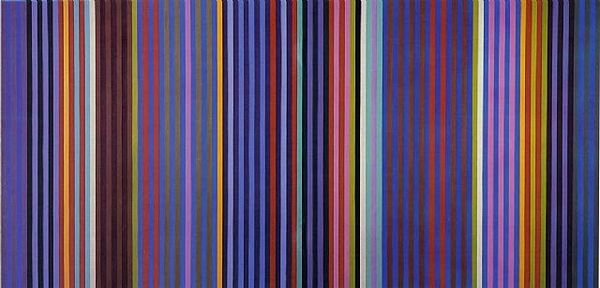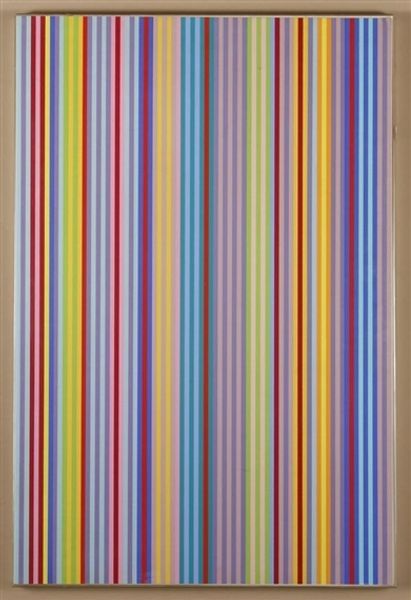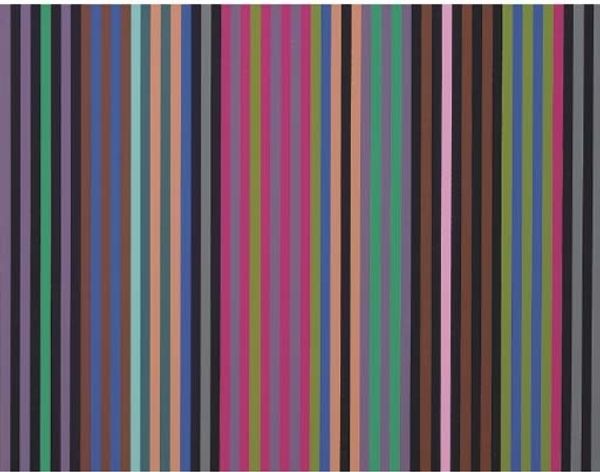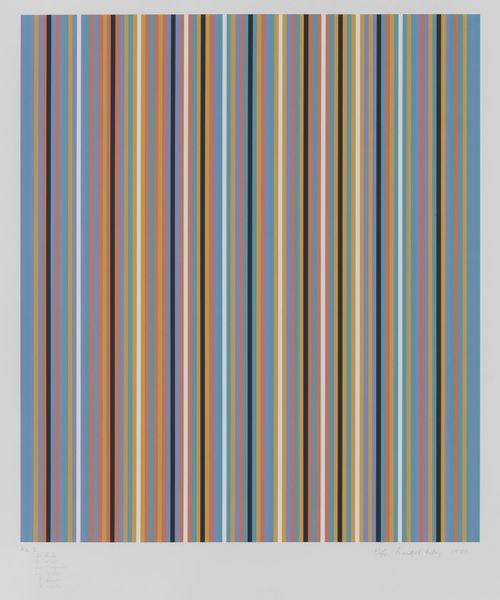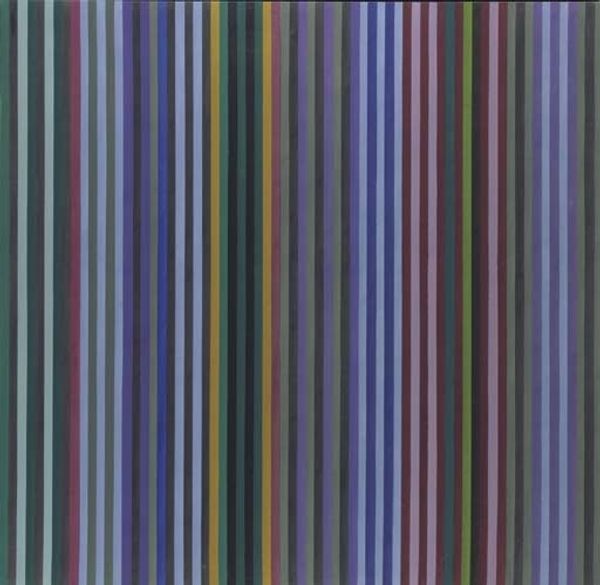
Dimensions: support: 2210 x 537 mm
Copyright: © ARS, NY and DACS, London 2014 | CC-BY-NC-ND 4.0 DEED, Photo: Tate
Curator: Standing before us is Gene Davis’s “Quiet Firecracker” in the Tate collection, a striking example of his stripe paintings. Editor: It feels almost musical, like a visual representation of a muted jazz riff. The narrow vertical lines vibrate with subtle energy. Curator: Davis used masking tape to achieve these precise, uniform stripes, a technique emphasizing the physical act of painting. The scale is also impressive, nearly eight feet tall. Editor: The colours! Such curious pairings. Blues next to pinks, yellows against greens. Do they symbolize something specific for Davis? Curator: While Davis rarely spoke of symbolism, the stripes’ rhythmic arrangements certainly evoke emotional responses. It is up to the viewer to interpret what they mean. Editor: Right, it’s more about the optical experience, the sensation of colour itself. The impact of seriality. Curator: Exactly, Davis's emphasis on repetitive, hand-applied stripes really makes you think about the labour involved. Editor: Well, I certainly see why he called it “Quiet Firecracker” now! Curator: Indeed, Gene Davis invites us to reconsider how colour and form alone can ignite a canvas.
